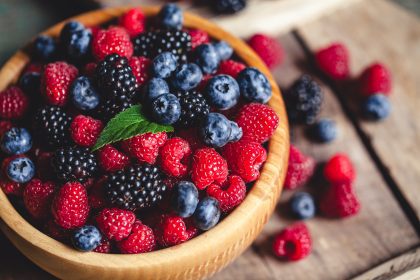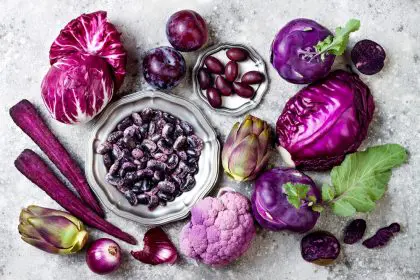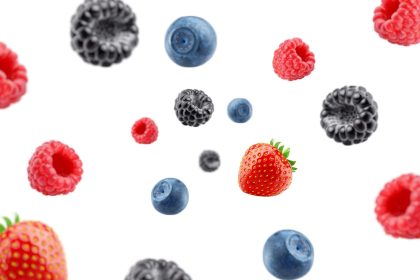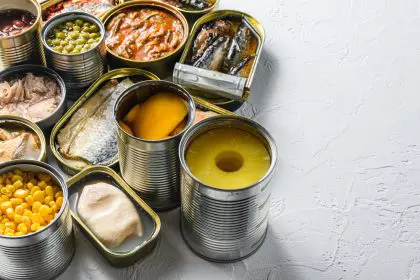As the years advance, maintaining health and vitality becomes increasingly important for quality of life. Exciting new research suggests that flavonoids – natural compounds found in many everyday foods – could be a key factor in promoting healthy aging and potentially preventing age-related decline.
What flavonoids are and why they matter to your body
Flavonoids represent a diverse group of phytonutrients naturally occurring in various plant-based foods including black tea, colorful berries, citrus fruits, and apples. These powerful compounds function as antioxidants in the human body, working diligently to combat oxidative stress and reduce inflammation – two primary drivers of aging and age-related diseases.
The importance of these compounds extends beyond simply fighting free radicals. Higher consumption of flavonoid-rich foods correlates with reduced risk of several chronic conditions that typically emerge with age, including heart disease, type 2 diabetes, and cognitive decline. This protective effect makes flavonoids particularly valuable as we navigate the aging process.
Research indicates that flavonoids may support healthy aging through multiple mechanisms. Perhaps most intriguingly, they appear to promote autophagy – the natural process through which your body eliminates old, damaged cells and replaces them with new, healthy ones. This cellular renewal process proves essential for maintaining overall health and function as we age.
Additionally, flavonoids contribute to reducing oxidative damage, supporting healthy blood vessels, and potentially preserving precious muscle mass that typically declines with advancing years. This multi-system influence makes flavonoids uniquely valuable in the quest for healthy longevity.
The groundbreaking study changing how we view aging
A comprehensive study published in The American Journal of Clinical Nutrition has revealed compelling connections between flavonoid consumption and healthy aging outcomes. Researchers analyzed data from over 85,000 participants aged 60 and older, tracking their consumption of flavonoid-rich foods and creating a “flavodiet score” to evaluate impacts on various health parameters.
The results proved particularly striking for female participants. Women with the highest flavonoid intake demonstrated a remarkable 15% lower risk of developing frailty – a condition characterized by weakness, decreased mobility, and increased vulnerability to health problems. These same women also experienced a 12% lower risk of impaired physical function and poor mental health compared to those consuming fewer flavonoids.
While men showed fewer statistical associations, those with high flavodiet scores consistently reported better mental health outcomes than their low-flavonoid counterparts. These findings suggest that incorporating flavonoid-rich foods into daily diets may help people remain mobile, independent, and mentally sharp throughout their later years.
7 surprising ways flavonoids benefit your aging body
- Flavonoids may help maintain strong, flexible blood vessels by supporting endothelial function – keeping blood flowing smoothly and potentially reducing cardiovascular disease risk.
- These compounds appear to preserve cognitive function by reducing inflammation and oxidative stress in brain tissues, potentially slowing cognitive decline associated with normal aging.
- Regular flavonoid consumption supports muscle maintenance and function, helping preserve strength and mobility that typically diminish with age.
- Anti-inflammatory properties of flavonoids may protect joints from age-related deterioration, potentially reducing arthritis symptoms and preserving range of motion.
- Certain flavonoids demonstrate protective effects on skin, potentially reducing wrinkles and maintaining elasticity by preserving collagen and elastin fibers.
- Flavonoids may support immune system function, helping older adults fight infections more effectively while reducing chronic inflammation.
- These beneficial compounds appear to promote gut health by supporting beneficial bacteria, improving nutrient absorption, and maintaining intestinal integrity.
The top flavonoid-rich foods to add to your shopping list
Incorporating flavonoid-rich foods into your daily diet doesn’t require drastic changes or exotic ingredients. Many common, accessible foods contain substantial amounts of these beneficial compounds:
Berries rank among the most potent flavonoid sources, with blueberries, blackberries, and strawberries leading the pack. Adding a cup of mixed berries to breakfast or as a snack provides a significant flavonoid boost.
Citrus fruits including oranges, lemons, and grapefruits contain flavanones, a specific flavonoid subclass associated with reduced inflammation and improved blood vessel function.
Apples contain quercetin, a powerful flavonoid that may help reduce inflammation and support lung function. The old adage about an apple a day appears increasingly supported by modern nutritional science.
Green and black teas provide catechins and theaflavins respectively – flavonoid varieties associated with improved cardiovascular and metabolic health. Replacing one daily coffee with tea could significantly increase flavonoid intake.
Dark chocolate with at least 70% cocoa content delivers flavanols that support vascular health and cognitive function. A small square as an occasional treat combines pleasure with potential health benefits.
Red wine contains resveratrol, a flavonoid-like compound associated with longevity in some research. For those who drink alcohol, moderate red wine consumption might offer some flavonoid benefits.
Herbs and spices including parsley, thyme, and cinnamon contribute flavonoids while enhancing flavor, making them an easy addition to various dishes without adding calories.
How to maximize flavonoid benefits in your daily routine
Experts recommend several practical strategies for incorporating flavonoids into daily eating patterns:
Start your morning with a flavonoid-rich breakfast by adding berries to oatmeal or yogurt, or enjoying a cup of green tea instead of coffee.
Pack portable flavonoid sources like apples, oranges, or dark chocolate squares for convenient snacking throughout the day.
Use herbs liberally in cooking, as many culinary herbs contain concentrated flavonoids that survive the cooking process.
Consider seasonal eating patterns, focusing on local berries during summer months and shifting to citrus fruits in winter to maintain consistent flavonoid intake year-round.
Prepare flavonoid-rich foods properly to preserve their beneficial compounds. Gentle cooking methods or consuming fruits raw often preserves more flavonoids than high-heat cooking.
Combine flavonoid sources with healthy fats, as some flavonoids are fat-soluble and may be better absorbed when consumed alongside olive oil, avocado, or nuts.
Maintain consistent intake rather than occasional high doses, as research suggests regular consumption provides more significant benefits than sporadic intake.
When to start your flavonoid journey for maximum impact
While flavonoid benefits appear most pronounced in older adults, research suggests that beginning these dietary habits earlier in life may provide cumulative advantages. The protective effects of flavonoids likely build up over time, suggesting that midlife or earlier represents an ideal starting point for increasing flavonoid consumption.
However, evidence indicates that beginning a flavonoid-rich diet at any age can provide benefits. Even individuals who have not previously focused on these foods can experience improvements in various health parameters after increasing their flavonoid intake.
Consistency appears more important than timing when it comes to flavonoid benefits. Regular consumption over months and years allows these compounds to influence cellular function and systemic health gradually, potentially yielding greater benefits than sporadic high-dose consumption.
The future of flavonoid research and what it means for you
Current research on flavonoids and aging represents just the beginning of our understanding of these powerful compounds. Ongoing studies aim to identify specific flavonoid subclasses that might target particular aspects of aging, potentially leading to more personalized nutritional recommendations.
Scientists are also investigating potential synergistic effects between different flavonoids and other nutritional compounds, suggesting that dietary patterns incorporating diverse flavonoid sources might provide greater benefits than focusing on individual foods.
While further research develops, the current evidence strongly supports incorporating more flavonoid-rich foods into daily eating patterns. The potential benefits for healthy aging appear substantial, with minimal downsides beyond perhaps slightly increased grocery costs for fresh produce.
As science continues uncovering the mechanisms through which flavonoids influence aging processes, we may develop even more targeted dietary recommendations. Until then, embracing a diet rich in colorful fruits, berries, teas, and other flavonoid sources represents a science-backed approach to supporting health and vitality throughout the aging process.

















